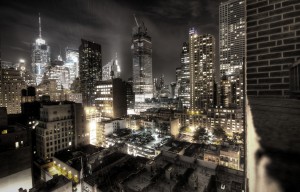There are quite a lot of software programs able to combine several photo images into one HDR (High Dynamix Range) picture. But they are visibly not born equal. Camera Dojo compared several of them:
The first one produces pictures that are quite unimpressive (and rather dark), the last one is rather balanced and tries its best to produce very credible photos of a near perfect homogeneity. The second, Photomatix, outputs images totally out of the ordinary: If you want it to look HDR, this is the right one; but don’t look for realism if you are not able to use finesse and your best judgement against pushing the limits.

On the opposite, using the HDR feature of Photoshop is relatively easy and totally free (if you already spent a huge amount on the excellent Adobe software program).
To be noticed: He did not test qtpfsgui, open source and quite famous here; Neither did he try Artizen HDR which, for the very acceptable amount of 45.95 Canadian dollars, offers a lot of flexibility and parameterization to master the exact output.
Comments
2 responses to “Best HDR software”
Is the so-called HDR feature of Photoshop really HDR ? I don’t own it myself, but from the experiments I could run on a friend’s machine the results looked like an exposure blender.
My preference definitely goes to Photomatix for its simplicity and outstanding results. As Yves suggests you need to be light on the sliders if you want realism, but realism is not always the goal. Photomatix is a bit more expensive than the listed competitors (99 USD, free trial version with watermark) but really stands out.
Well. It seems that Photoshop is aiming at the maximum realism and this leads to somewhat low-key HDR. Actual dynamic range increase, but also a minimal transformation of the rendered image and a little under-exposure in most cases.